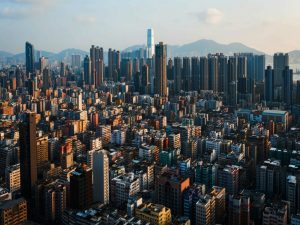Advantages and disadvantages of a low population: The population of an area means the indigenes and non-indigenes living within a geographical area. Population demographics is the act of collecting the relevant data that will be used to study the population of an area. The essence of population studies is for experts to determine whether the growth rate of the population is at par with the growth rate of the economy. If they are not growing at the same rate, this is dangerous, as underpopulation will bring about underemployment (there would be too many opportunities and very little employed) and overpopulation would lead to unemployment (too many people looking for opportunities but no opportunity available for them).

In determining this study, they look at dense and sparse populations and determine the advantages and disadvantages of this two populations. After a careful look at their findings, here is what I found out was the common denominator in relation to the advantages and disadvantages of a low population.
Recommended: Advantages and Disadvantages of High Population Density
Advantages (Merits) of low population density
1. There is little or no congestion in areas with low population: Congestion simply means the gathering of things into a heap or mass. Congestion can be of two types: Human or traffic congestion. Human congestion occurs when the pedestrian population of an area has become too much that there isn’t free movement of people by foot from one place to the other.

The laymans yardstick for determining whether an area has human congestion or not is to notice whether someone can run from one end of the area to another end without bumping into or excessively dodging people. If they can’t, then there is human congestion in that area. As for traffic congestion, in judging this, take notice of whether cars can move freely without having to stop for another car when there isn’t any traffic light ahead.
Again, if there is a breakdown of a motor vehicle on the road, will that cause a gridlock? Road congestion can also mean an excess of traffic. Road congestion is a very common problem across various cities of the world.
Recommended: Countries with the best education system in the world
Traffic congestion can be caused by various reasons:
A. Rural urban migration: This is the mass movement of people from the rural areas to the urban areas in search of jobs. This hundreds of thousands of people then buy cars and enter puplic transportation in order to get from their homes to their places of destination. This causes congestion on the streets of cities.
B. Lack of proper city planning: Properly planed cites have spacious roads, designated pedestrian walks and easy to navigate roads. Improperly planned cities are the opposite of this, and it leads to congestion.
C. A proliferation of private car use: a wide use of private cars by the citizens causes congestion because this cars have to stop at street lights, navigate bends and roundabouts, and park by the street sides.
D. Inadequate puplic transport: Inadequate transport faciltities in an urban area is a surefire way to congestion. In places like Eastern Nigeria where there is puplic transport but inadequate ones, like buses with very few sits and little or no alternative means of transport, congestion sets in.
Recommended: 11 Countries that were never colonized in History
2. There is no generation of unsuitable waste that is harmful to the individual and Environment: Dense cities of the earth produce non-biodegradable waste. This is especially seen in dense Western cities like NewYork and cities in Africa like Lagos. NewYork city alone produces more than 12,000 tons of waste a day and more than 14 million tons of waste per year and this excess waste they are struggling to recycle and process.

In cities like Lagos that doesn’t have the adequate modern facilities to process this waste, they end up in landfills that produce emissions that cause diseases both to humans, plants and animals.
3. There is no water and food shortages: For it is a fact that densely populated areas have adequate food, water and social amenities, but the Covid-19 pandemic has caused the world to realize that there is actually a benefit to living in rural communities, or in places that are not densely populated.
Take for example the ending of March 2020 when countries of the world were beginning their lockdown, people rushed to stores and bought, stole and begged for items that they would use till there was dire shortage. Then when the lockdown was full blast in some cities like Lagos, Nigeria, people were out in the streets begging and looting. Those in less populated areas like Enugu were still able to get their goods and services as at when due.
Also see: Best Programming Languages for Artificial intelligence
4. There is little or no crime and social unrest: There is no gainsaying the fact that crimes are prevalent in densly populated areas. This is especially true of the prevalence of violent crimes, which is at a very low ebb in less dense areas.
This is statistically relevant because there are more people in densely populated areas than in less dense areas. The crimes that are prevalent in populated areas are:
a. Violent crimes: Violent crimes range from homicide to harassment, and entails crimes in which violence is used as a show of force or a means of coercion. Such crimes are assassination, rape, murder, terrorism, extortion and robbery. Crimes may be classified as violent crimes whether they are done with or without weapons.
b. Non-violent: They are crimes that do not require the use of force and injury to the person. Most Non-violent crimes are property damage, petty theft, violation of rules like traffic rules.

Recommended: Causes, Effects and Solutions to low self-esteem
Disadvantages (demerits) of under population
To every advantage, there is always a disadvantage. Now let’s explore the disadvantages of a low population.
1. There is very little human capital in low populated areas: In urban areas there isn’t just an increase in human capital but there are also technologies used to utilize this capital. Since there are more people, there is a possibility of finding people that will work as professionals, inventors, and in large corporations and businesses.
There is also the proliferation of good secondary schools in densely populated areas that have better and more profitabile equipments.
Recommended: Best Times to read and understand effectively
2. There is little or no economic growth in low density areas: There are various ways that an increase in population will lead to increased economic growth:
a. There will be increase in tax revenues: Increase in population means increase in tax revenues for the government because there are more people paying this tax. Some cities even have a higher taxation policy on the people.
b. There will be increase in the number of business: The number one thing business people and hardcore capitalists look for in an area before employing people is the number of people that they can employ.
For this reason they opt for setting up their businesses in densly populated areas. Have you ever wondered why headquarters of organizations that have a lot of staff in them are set up in overpopulated capital cities? This is the reason why.
Also see: Advantages and Disadvantages of Being a Lawyer
3. Less demand for rented facilties: Again there is a reason why rented facilities are spotted towering in densely populated areas. More employment means more people living in them, this means more rented facilties (houses and shops) will spring up in this areas.

4. Little turnover for shopkeepers and businesses leading to rural-urban migration: Rural-urban migration is properly called urbanization. It is the movement of people from rural to urban areas for various reasons and the way the society responds to it.
Reasons for rural-urban migration are numerous, including:
a. Poor quality standard of living for the rural workers.
b. Low paid wages for work.
c. Inadequate facilities or lack of facilities and
d. The search for white-collar jobs.
Recommended: Most technologically advanced countries in the world
To some people dense populations are more preferable, to some others sparse populations are non preferable, but to every advantage there is a disadvantage, and after a careful look at the above analysis, I hope you take the correct stance.

Edeh Samuel Chukwuemeka, ACMC, is a lawyer and a certified mediator/conciliator in Nigeria. He is also a developer with knowledge in various programming languages. Samuel is determined to leverage his skills in technology, SEO, and legal practice to revolutionize the legal profession worldwide by creating web and mobile applications that simplify legal research. Sam is also passionate about educating and providing valuable information to people.
